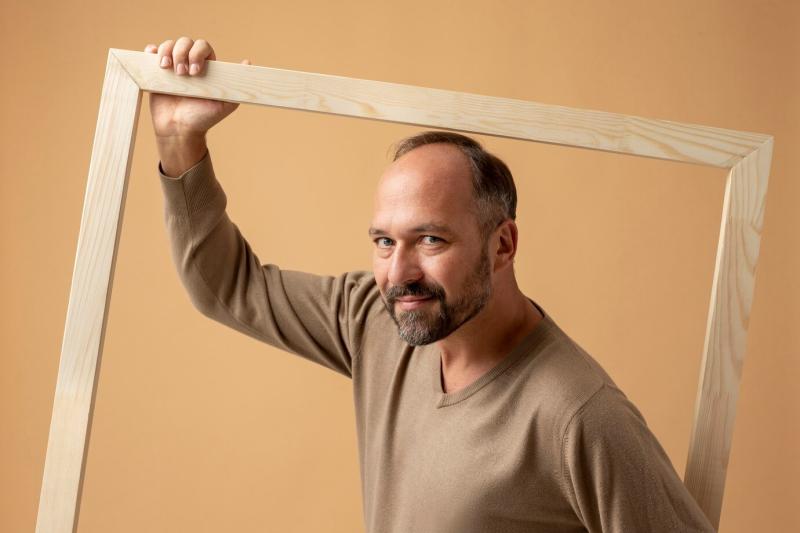The Rise of Hair Grafting in Australia: A Modern Solution to Hair Loss

Hair loss has been a concern for individuals across the globe for centuries, affecting both men and women of various ages. In recent years, Australia has seen a significant surge in the popularity and advancement of hair grafting techniques, offering a modern and effective solution to this age-old problem. This article delves into the rise of hair grafting in Australia, exploring its evolution, benefits, and impact on those seeking to restore their hair and confidence.
Understanding Hair Loss
Before delving into the solution, it's crucial to understand the problem. Hair loss, medically known as alopecia, can occur due to various factors:
Genetics: Hereditary hair loss, or androgenetic alopecia, is the most common cause of hair loss in both men and women.
Hormonal changes: Fluctuations in hormones due to pregnancy, childbirth, menopause, or thyroid problems can lead to temporary or permanent hair loss.
Medical conditions: Certain autoimmune diseases, such as alopecia areata, can cause patchy hair loss.
Medications and treatments: Some medications, particularly those used in cancer treatments like chemotherapy, can cause hair loss as a side effect.
Stress: Physical or emotional stress can trigger temporary hair loss.
Nutritional deficiencies: Lack of essential nutrients, particularly iron and protein, can contribute to hair loss.
In Australia, as in many Western countries, hair loss affects a significant portion of the population. According to recent studies, approximately 50% of men and 25% of women over the age of 50 experience some degree of hair loss. This prevalence has created a substantial demand for effective hair restoration solutions.
The Evolution of Hair Restoration Techniques
Hair restoration has come a long way since its inception. Let's take a brief look at its evolution:
1. Early attempts
The earliest recorded attempts at hair restoration date back to ancient Egypt, where physicians used a mixture of fats from hippopotamus, crocodile, tomcat, snake, and ibex to combat baldness. While creative, these methods were largely ineffective.
2. Hair pieces and wigs
For centuries, the primary solution to hair loss was the use of wigs or hairpieces. While these provided a cosmetic solution, they did not address the underlying issue of hair loss.
3. Hair plugs
The 1950s saw the introduction of hair plugs, where large grafts of hair-bearing skin were transplanted to bald areas. While groundbreaking at the time, the results often looked unnatural and "pluggy."
4. Follicular Unit Transplantation (FUT)
Developed in the 1990s, FUT involved removing a strip of scalp from the back of the head and dissecting it into individual follicular units for transplantation. This method provided more natural-looking results but left a linear scar.
5. Follicular Unit Extraction (FUE)
FUE, introduced in the early 2000s, involves extracting individual follicular units directly from the scalp. This method minimizes scarring and allows for quicker recovery times.
The Rise of Hair Grafting in Australia
In recent years, Australia has seen a significant increase in the popularity and availability of hair grafting procedures. Several factors have contributed to this rise:
1. Advancements in technology
Australian clinics have been quick to adopt the latest hair grafting technologies, including robotic-assisted FUE systems. These advanced systems offer precision and consistency in graft harvesting, leading to improved results and reduced procedure times.
2. Increased awareness
There has been a growing awareness about hair loss solutions in Australia, thanks to media coverage, celebrity endorsements, and targeted marketing campaigns. This has helped reduce the stigma associated with seeking hair restoration treatments.
3. Changing societal attitudes
Australian society has become more accepting of cosmetic procedures, including hair restoration. This shift in attitude has made it easier for individuals to seek treatment without fear of judgment.
4. Economic factors
As the Australian economy has grown, more individuals have the disposable income to invest in their appearance, including hair restoration procedures.
5. Medical tourism
Australia has become a popular destination for medical tourism, attracting patients from neighboring countries for various procedures, including hair grafting.
The Hair Grafting Process
Modern hair grafting in Australia typically involves the following steps:
1. Consultation
The process begins with a thorough consultation with a hair restoration specialist. During this stage, the patient's hair loss pattern, donor hair availability, and expectations are assessed.
2. Planning
Based on the consultation, a personalized treatment plan is developed, outlining the number of grafts needed, the harvesting method, and the design of the hairline.
3. Harvesting
Depending on the chosen method (FUT or FUE), hair follicles are harvested from the donor area, typically the back and sides of the head where hair is genetically programmed to be permanent.
4. Graft preparation
The harvested follicles are carefully prepared under microscopic magnification to ensure their viability.
5. Recipient site creation
Tiny incisions are made in the balding areas to receive the grafts. The angle, direction, and depth of these incisions are crucial for achieving a natural-looking result.
6. Graft placement
The prepared grafts are carefully placed into the recipient sites, following the predetermined design to ensure a natural hair growth pattern.
7. Post-procedure care
Patients are provided with detailed instructions for post-operative care to ensure optimal graft survival and healing.
Benefits of Modern Hair Grafting
The advancements in hair grafting techniques have brought numerous benefits:
Natural-looking results: Modern techniques allow for the creation of a natural-looking hairline and hair growth pattern.
Minimally invasive: FUE procedures, in particular, are minimally invasive, resulting in less scarring and quicker recovery times.
Permanent solution: Unlike temporary solutions like wigs or hairpieces, hair grafting provides a permanent solution to hair loss.
Versatility: Hair grafting can be used to restore hair on the scalp, eyebrows, beard, and even to cover scars.
Boost in confidence: Many patients report significant improvements in self-esteem and confidence following successful hair restoration.
Challenges and Considerations
While hair grafting has seen significant advancements, there are still challenges and considerations to be aware of:
Cost: Hair grafting procedures can be expensive, and they are typically not covered by Medicare or private health insurance in Australia.
Time commitment: The procedure itself can take several hours, and multiple sessions may be required for extensive hair loss.
Recovery period: While minimally invasive, there is still a recovery period during which patients need to follow specific care instructions.
Potential for additional hair loss: Hair grafting does not stop the progression of genetic hair loss, so additional procedures may be needed in the future.
Unrealistic expectations: It's crucial for patients to have realistic expectations about the results of hair grafting.
The Future of Hair Grafting in Australia
The future of hair grafting in Australia looks promising, with several exciting developments on the horizon:
1. Stem cell therapy
Research is ongoing into the use of stem cells to regenerate hair follicles, potentially offering a solution for those with limited donor hair.
2. 3D printing technology
Advancements in 3D printing technology may soon allow for the creation of scaffolds to support hair follicle growth.
3. Improved automation
Further refinements in robotic-assisted systems are expected to improve the precision and speed of graft harvesting and placement.
4. Non-invasive treatments
Research is ongoing into non-invasive treatments that could stimulate hair growth without the need for surgery.
Conclusion
The rise of hair grafting in Australia represents a significant advancement in the treatment of hair loss. As techniques continue to improve and awareness grows, more Australians are likely to consider this modern solution to an age-old problem. While challenges remain, the future of hair restoration in Australia looks bright, offering hope to those struggling with hair loss and its impact on self-esteem and quality of life.
As with any medical procedure, individuals considering hair grafting should consult with qualified professionals to determine if it's the right solution for their specific situation. With the right approach and realistic expectations, hair grafting can be a life-changing solution, helping Australians regain not just their hair, but their confidence and sense of self.










Comments